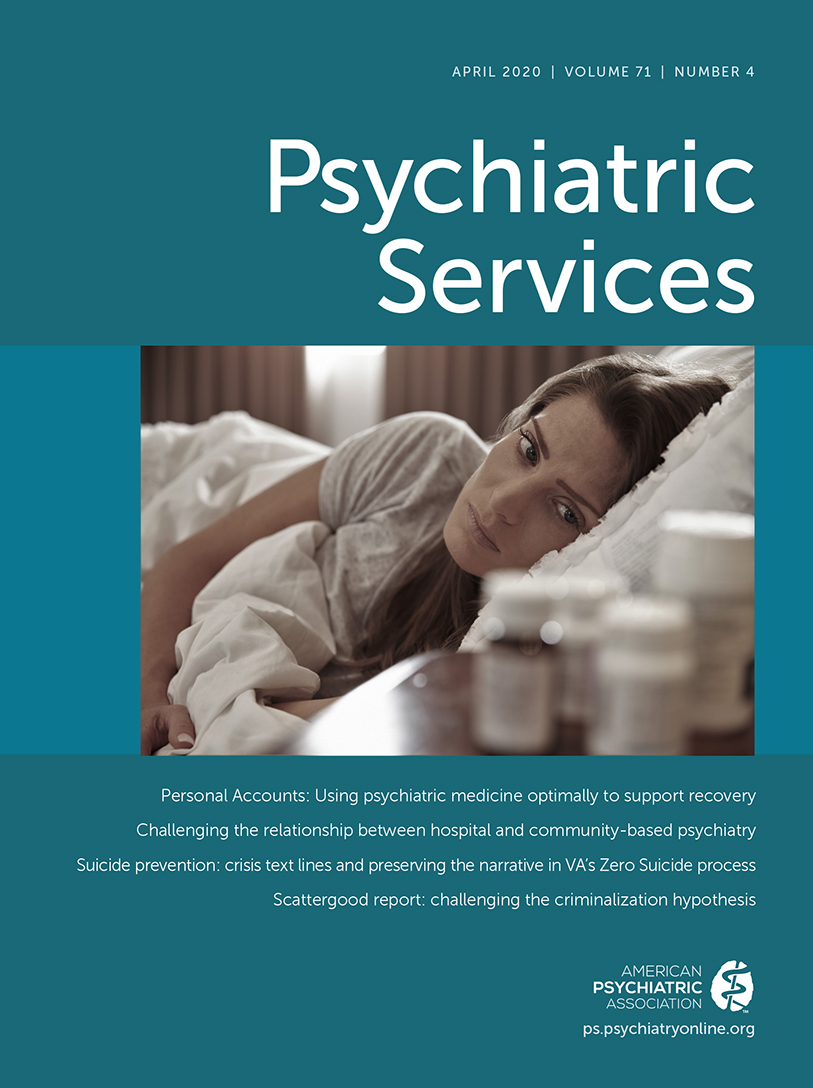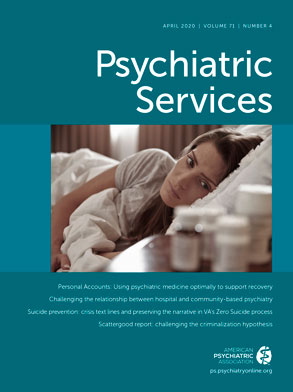Crisis text lines, originating in 2013, are gaining momentum as a suicide prevention crisis service. One of the first national texting hotlines, Crisis Text Line, reports exchange of 125 million text messages since its inception (
www.crisistrends.org). Despite increasing use of text lines, empirical data are minimal pertaining to who uses these services and their effectiveness in minimizing suicidal symptoms.
Szlyk et al.’s (
1) article on chat line suicide crisis services enhances understanding about suicidal texters, who are grouped by chat frequency and type of distress. Findings point to the not surprising similarity in content across messages, even among texters with different texting frequencies. The fact that almost 40% of the texters sent messages with high frequency (three or more times) highlights the magnitude of multiple texting episodes and likelihood that users, particularly repeat users, find the service helpful.
Chat services are a more recent addition to the armamentarium of suicide prevention services. Although research into chat line services is in its infancy, studies have found that individuals who use these services are generally younger than callers to crisis phone lines and may follow U.S. youths’ preference to communicate via texting. The increased anonymity of the chat line also may favor participation by those who feel ashamed or stigmatized regarding their mental health and suicidal concerns.
We do not yet know whether crisis texting services are as effective as crisis phone lines, but initial studies found no differences, which makes sense. Both modes mitigate loneliness; staff for each are available and warm, willing to listen, problem solve, provide resources, and promote reconnection to care. Moreover, both modes are convenient and free to use. Chat lines can be translated into over 150 languages and thus may be more usable by an international audience than calls. Data regarding individual differences between crisis texters and callers are not readily available. Unfortunately, Szlyk and colleagues’ report sheds little light on this issue; demographic data for their study were mostly uncollected because of the anonymous nature of the interactions. Future research may be able to better define who is using these services.
Szlyk et al.’s data on texting frequency are helpful. The high-frequency texters, texting three or more times, constitute 39.5% of the individuals who used the service. In contrast, the Australia Lifeline service (
www.lifeline.org.au) for both calls and texts defines high utilizers as those who place more than 20 calls per month. Australia Lifeline reports that whereas only 3% of the callers were high utilizers, they amounted to a substantial proportion of Lifeline’s workload, underscoring a critical problem of resource allocation and a need to manage messages from these individuals effectively. These multiple outreach efforts proved immensely helpful for socially isolated callers in despair. Availability of a human on the other side of a phone, whether by call or text, offers comfort and connection in an otherwise solitary world.
Several future research directions are suggested from this valuable article. It will be important to demonstrate that the chat services are improving suicidal outcomes or are diminishing suicide risk by fostering protective factors, such as reengagement in care. Study is also needed concerning chat line reach and utilization, including whether individuals most in need are using the chat service, the requisite training for chat line providers, and whether a more specialized skill set is required. Although continued empirical investigations regarding evaluation of these crisis services are clearly needed, novel and exciting research avenues are emerging that leverage big-data approaches to identify risk patterns by using the vast quantity of text messages. Current efforts are examining chat message content, including identification of suicide-related words to identify high-risk profiles. Research within the U.S. Department of Veterans Affairs further enhances risk detection by integrating crisis call information with medical record data, such as medication and clinical service use, to build more robust risk profiles. Enhancing analytic techniques, such as natural language processing of crisis call content, is a critical next step. The hope is that these big-data approaches yield valuable information to assist frontline clinicians in identifying the most vulnerable patients.

